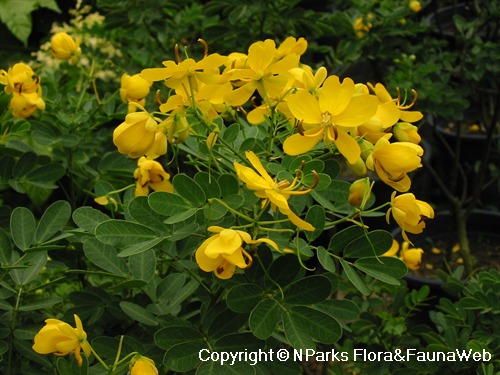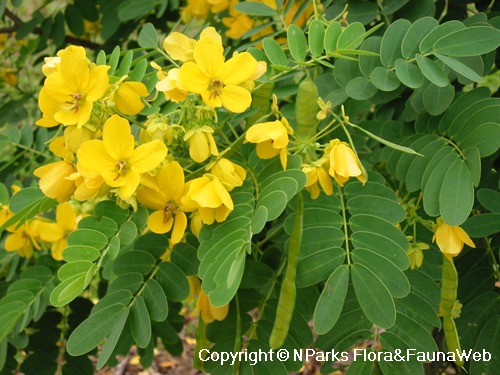_lowres.jpg)
Back
Senna alata (L.) Roxb.
| Family Name: | Fabaceae (Leguminosae) |
| Synonyms: | Cassia alata Linnaeus |
| Common Name: | Candle Bush, Empress Candle Plant, Seven Golden Candlesticks, Candlestick Cassia, Candlestick Senna, Christmas Candle, Ringworm Cassia, Ringworm Bush, Gelenggang, Daun Kurap, 翅荚决明 |
Name
Classifications and Characteristics
| Plant Division | Angiosperms (Flowering Seed Plants) |
|---|---|
| Plant Growth Form | Shrub |
| Lifespan (in Singapore) | Perennial |
| Mode of Nutrition | Autotrophic |
| Maximum Height | 4 m |
Biogeography
| Native Distribution | Venezula, Brazil, Columbia |
|---|
Description and Ethnobotany
| Growth Form | Erect shrub, able to grow up to 3 - 4 m tall. |
|---|---|
| Foliage | Pinnately compound leaves are composed of 6 - 12 pairs of leaflets (30 - 60 cm long). Oblong leaflets are smooth and thinly leathery (6 - 15 cm long, 3.5 - 7.5 cm wide). They have a rounded tip with a slight indentation in the middle. |
| Flowers | Flowers are arranged in a vertical column and bloom from the base of the column. The inflorescence, known as a raceme, resembles a lit, yellow candle, because the flowers at the base are yellow, while the unopened flower buds at the top are covered by orange bracts. |
| Fruit | Winged pods are dark purple to black, smooth and 4-sided. They contain 50 - 60 flattened, triangular to squarish seeds. |
| Habitat | Often occurs on wet soil in wastelands and flood plains. |
| Associated Fauna | Ants protect the plant from caterpillars and are rewarded by nectar produced by extrafloral nectaries. |
| Cultivation | This easy-to-grow, fast-growing species is highly adaptable, tolerating both drought and waterlogged soils. Individual should be spaced 2 - 5 m apart. It tends to attract ants. Propagate by seed, division, or semi-hardwood cuttings. Plants started from seed will flower in about 6 months. To prevent it from becoming invasive, removed the seed pods before they split open. |
| Etymology | Genus Senna is derived from the Arabic name "sana", which refers to the laxative leaves and pods. Species alata means wing-like fruits. |
| Ethnobotanical Uses | Medicinal: The leaves and plant sap have anti-fungal properties, because they contain chrysophanic acid. In the Philippines, it is added to shampoo and soap for its anti-fungal properties. It also contains saponin which acts like a laxative and can be used to remove intestinal parasites. |
Landscaping Features
| Desirable Plant Features | Ornamental Flowers |
|---|---|
| Landscape Uses | Parks & Gardens, Small Gardens |
Fauna, Pollination and Dispersal
| Fauna Pollination Dispersal Associated Fauna | Butterfly Host Plant, Bee-Attracting |
|---|
Plant Care and Propagation
| Light Preference | Full Sun |
|---|---|
| Water Preference | Moderate Water |
| Plant Growth Rate | Fast |
| Rootzone Tolerance | Moist Soils, Well-Drained Soils |
| Propagation Method | Seed |
Foliar
| Foliage Retention | Evergreen |
|---|---|
| Mature Foliage Colour(s) | Green |
| Leaf Area Index (LAI) for Green Plot Ratio | 4.5 (Shrub & Groundcover - Dicot) |
Floral (Angiosperm)
| Flower Colour(s) | Yellow / Golden |
|---|---|
| Flower Grouping | Cluster / Inflorescence |
Fruit, Seed and Spore
| Seed Quantity Per Fruit | Numerous (>20) |
|---|
Image Repository
Others
| Master ID | 1157 |
|---|---|
| Species ID | 2450 |
| Flora Disclaimer | The information in this website has been compiled from reliable sources, such as reference works on medicinal plants. It is not a substitute for medical advice or treatment and NParks does not purport to provide any medical advice. Readers should always consult his/her physician before using or consuming a plant for medicinal purposes. |

_lowres.jpg)


_lowres.jpg)

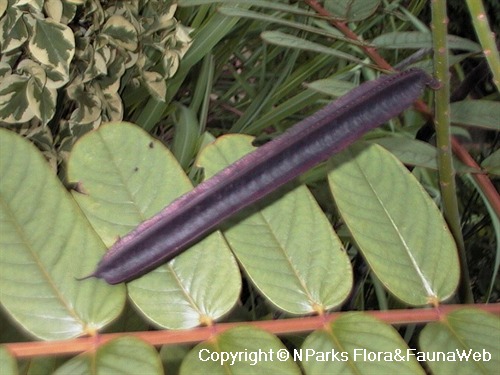
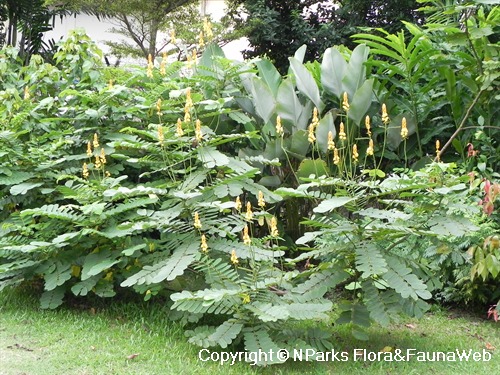
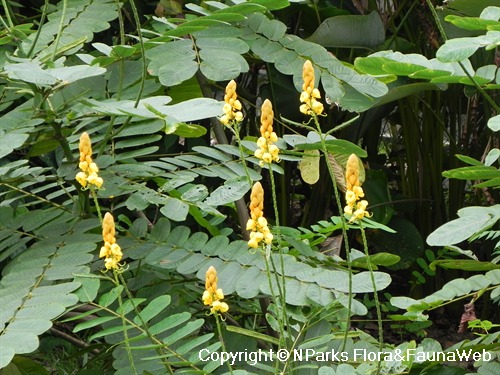


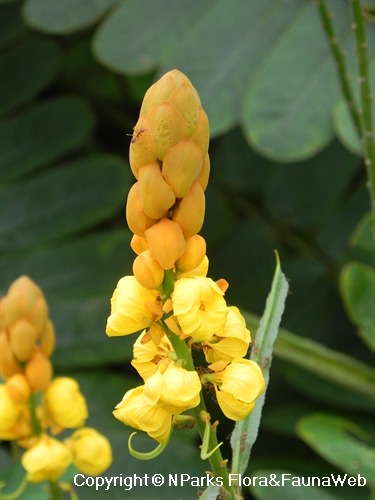
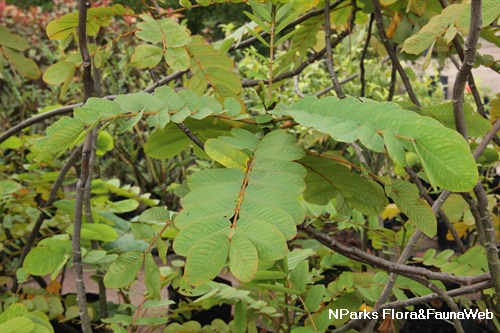
_lowres.jpg)

